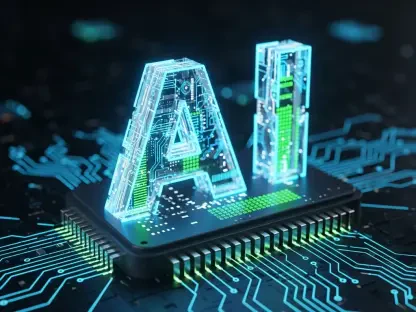The Rise of AI in Software Development
The software development industry stands at a pivotal moment where artificial intelligence is reshaping how code is created, tested, and deployed, promising unprecedented efficiency that could transform the field. AI tools have surged in adoption, with developers and organizations increasingly relying on them to automate repetitive tasks and accelerate project timelines. This transformative shift is not merely a trend but a fundamental change in the landscape of programming, where manual coding is giving way to machine-driven solutions that can handle complex workflows with remarkable speed.
Major players like GitHub with Copilot, alongside other innovators in AI code generation, have driven this evolution through advancements in natural language processing and machine learning models. These tools can now generate functional code snippets, suggest optimizations, and even draft entire applications based on minimal input. The growing integration of such platforms into integrated development environments signals broader acceptance among tech teams, from startups to enterprise giants, seeking to stay competitive in a fast-paced market.
Beyond immediate efficiency gains, the implications of AI in coding extend to productivity and innovation on a grand scale. By offloading routine tasks to algorithms, developers can focus on creative problem-solving and strategic design, potentially unlocking new avenues for software breakthroughs. However, this rapid automation also raises questions about quality control and oversight, setting the stage for a deeper examination of how far AI can go without robust governance to guide its outputs.
AI’s Coding Capabilities and Limitations
Trends in AI Code Generation
AI has progressed significantly from a supportive role to becoming a near-autonomous creator in software development, capable of producing not just code but also configurations, automated tests, and infrastructure setups. This evolution reflects a leap in technological sophistication, where models trained on vast repositories of programming knowledge can interpret high-level instructions and deliver detailed implementations. The speed and volume of output have made AI an indispensable asset for developers aiming to meet tight deadlines without sacrificing scope.
Current trends point to deeper integration of AI into everyday workflows, with tools becoming seamlessly embedded in code editors and CI/CD pipelines. Developers are shifting behavior toward greater reliance on these systems, often using them as a first draft for projects before refining the results. This shift opens opportunities for efficiency, allowing teams to iterate faster and tackle larger, more ambitious initiatives with fewer resources.
The impact of this reliance is evident in how AI is reshaping skill sets within the industry, prioritizing oversight and customization over traditional coding proficiency. As adoption grows, the focus turns to maximizing the potential of these tools while addressing the inevitable gaps in their capabilities. This dynamic underscores the need for a balanced approach to leveraging AI’s strengths without overlooking its inherent shortcomings.
The Gap Between Creation and Deployment
Despite AI’s prowess in generating code, a critical challenge persists in the “last mile problem,” where outputs often fall short of production-ready standards. While algorithms can produce syntactically correct code, they frequently lack the contextual understanding required to align with specific organizational requirements or industry best practices. This disconnect poses a significant barrier to seamless deployment in live environments where precision and reliability are non-negotiable.
A key issue lies in AI’s inability to inherently grasp nuanced policies, such as internal security protocols or compliance mandates, which are often undocumented or embedded in team culture. Without human intervention, AI-generated code may inadvertently introduce vulnerabilities, such as outdated dependencies or improper data handling, risking breaches or operational failures. These shortcomings highlight the limitations of automation in fully replacing human judgment at critical junctures.
Moreover, the risks extend beyond technical flaws to legal and ethical concerns, including the use of restrictive licenses that could expose companies to litigation. Unverified code deployed without scrutiny can undermine trust in AI tools, emphasizing the importance of rigorous validation processes. Addressing this gap requires not just technological refinement but a structured framework to ensure that AI’s creations meet the stringent demands of real-world application.
Challenges in Deploying AI-Generated Code
Deploying AI-generated code into production environments presents a host of obstacles that span both technical and human dimensions. On the technological front, integrating AI outputs with legacy systems or existing architectures often reveals compatibility issues, requiring extensive rework. These integration hurdles can slow down deployment cycles, negating some of the speed advantages that AI promises in the first place.
Human-driven challenges further complicate the picture, as many organizations grapple with fragmented or poorly documented policies that govern code release. Without clear guidelines, teams struggle to evaluate AI outputs against necessary standards, leading to delays or outright rejections of otherwise functional code. This lack of clarity amplifies the risk of errors slipping through, particularly in high-stakes sectors like finance or healthcare where compliance is paramount.
Potential solutions lie in establishing structured governance models that can keep pace with AI’s rapid output while maintaining organizational control. Implementing standardized review processes and automated validation tools could help bridge the gap between creation and deployment. Ultimately, overcoming these challenges demands a concerted effort to align technological innovation with disciplined oversight, ensuring that AI serves as a reliable partner rather than a liability.
The Role of Policy in Safe AI Deployment
Policy emerges as the cornerstone of safe AI deployment, acting as the backbone that guides software delivery in an era of automation. Explicit rules, such as security protocols and licensing restrictions, alongside implicit norms like team-specific practices, determine whether code can progress from development to production. These frameworks are essential for maintaining order amid the chaos of rapid, machine-generated outputs that could otherwise overwhelm traditional review mechanisms.
Yet, the reality in many organizations reveals a fragmented policy landscape, where guidelines are often scattered across informal channels or locked in institutional memory. This disorganization hinders the ability to scale AI-driven development, as teams must navigate a maze of unwritten rules to ensure compliance. The resulting inefficiencies underscore the urgent need for centralized, accessible policy structures that can adapt to the pace of technological change.
As a control mechanism, policy serves not only to mitigate risks but also to uphold legal and security standards critical to organizational integrity. By defining clear boundaries for AI tools, policies ensure that innovation does not come at the expense of accountability. Strengthening this foundation is vital for building trust in AI systems, enabling companies to harness their potential while safeguarding against unintended consequences that could derail progress.
Future Directions: Bridging the Last Mile with Solutions Like MCP
Looking ahead, the future of AI in software development hinges on the development of scalable governance frameworks that can address the last mile problem. As AI continues to evolve, the demand for mechanisms to enforce policy at scale becomes increasingly pressing. Without such systems, the industry risks either stifling innovation through over-regulation or exposing itself to significant vulnerabilities by prioritizing speed over safety.
One promising solution lies in the Model Context Protocol (MCP), described as a control plane for trust, which automates policy enforcement by linking AI outputs to organizational rules. MCP transforms fragmented guidelines into machine-readable standards, integrating with security scanners and compliance frameworks to ensure that code adheres to predefined trust boundaries. This approach reduces the burden on human reviewers, allowing for faster, safer deployment cycles without compromising quality.
Disruptors such as evolving global regulations and shifting compliance standards will likely shape the trajectory of AI deployment in the coming years. A policy-first mindset offers a way to navigate these changes, balancing the drive for innovation with the imperative of responsibility. By embedding solutions like MCP into development pipelines, the industry can pave the way for sustainable growth, ensuring that AI’s contributions are both groundbreaking and secure.
Final Thoughts
Reflecting on the insights gathered, it becomes evident that the tension between AI’s coding capabilities and the need for robust governance defines the current state of software development. The last mile problem stands as a persistent barrier, with policy emerging as the critical factor in determining whether AI-generated code can be safely deployed. This challenge underscores the limitations of technology alone in addressing the nuanced demands of production environments.
Moving forward, actionable steps emerge as a priority for organizations aiming to integrate AI responsibly. Adopting automated policy enforcement tools like MCP offers a tangible path to streamline oversight while preserving innovation. Additionally, investing in centralized policy documentation proves essential to eliminate fragmentation and empower teams with clear guidelines.
Beyond immediate solutions, a broader consideration takes shape around fostering a culture of accountability within tech ecosystems. Encouraging collaboration between developers, policymakers, and compliance experts promises to build resilient frameworks capable of adapting to future disruptions. These steps collectively point toward a balanced approach, ensuring that AI’s transformative potential is harnessed with integrity and foresight.








